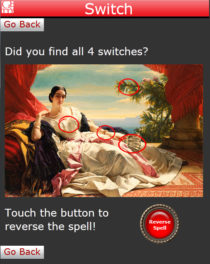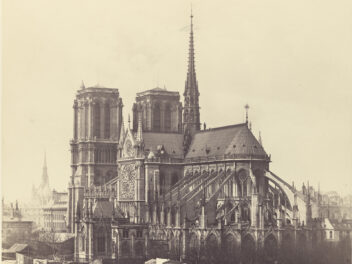For the first #FridayFlights of 2014, record shop owners Liz Tooley and Lance Baressi select songs as a backdrop to Jackson Pollock’s Mural

Mural, 1943, Jackson Pollock (American, 1912–1956). Oil on canvas, 8’ ¼” x 19’ 10”. University of Iowa Museum of Art, Gift of Peggy Guggenheim, 1959.6 Reproduced with permission from The University of Iowa
Jackson Pollock’s epic painting Mural, which now hangs in a special exhibition at the Getty Center, is a loud and wildy musical painting created in 1940s New York at the center of the jazz movement. Pollock’s wife Lee Krasner recalled how he listened to jazz obsessively, and the influence of the squonky energy and the free-flowing improvisation of the genre can be clearly seen in his painting style. Krasner said Pollock “would get into grooves of listening to his jazz records not just for days day and night, but day and night for three days running, until you thought you would climb the roof!…Jazz? He thought it was the only other really creative thing that was happening in this country.”
Through the Friday Flights program, which kicks off this week, we’re using the Getty Center’s late summer hours to explore the connections between music and the visual arts. Having such a vibrant painting like Pollock’s Mural on view gives us an especially wonderful opportunity to understand how music and art operate as artistic mediums in relation to each other.
For the May 30 Friday Flights, I reached out to Liz Tooley and Lance Baressi, owners of Permanent Records, an independent record store with locations in both Los Angeles and Chicago. I asked them to look at Mural and translate it though their own lens and knowledge as lifelong record collectors and write a soundtrack for the painting.
I asked them to think about the painting not only through its obvious connections (jazz and improvisation), but also in terms of its formal qualities considering the bright tones of its yellows and pinks, divided by dissonant aggressive black strokes. We talked about Mural as a highly cacophonic wall of noise with layers of colors mimicking layers of instruments, but also conceptually as something that evoked primal energy and the subconscious, as evidence of a performative action. Liz and Lance took these ideas and chose a playlist of songs by artists who share something either physically, intangibly, or even cosmically with Pollock’s Mural. Drawing a line across the avant-garde music of New York over decades, their selections feature music pioneers who used instruments as tools of radical experimentation in the same way Pollock used paint.
Bring your headphones to the Getty for this week’s Friday Flights, and listen to the YouTube playlist for the unique experience of viewing Pollock’s Mural in context with music, and be inspired to see this as just one way artwork can be viewed from unexpected directions.
In conjunction with Friday Flights, Liz and Lance will be writing a playlist inspired by more works on view at the Getty to coincide with each of the events. Look for those playlists here on The Getty Iris posted throughout the summer!
The Friday Flights Permanent Records Playlist
Charlie Parker, “Koko”—The Charlie Parker Story (1945)
Considered the first ever bebop recording. Epic musicians sitting in on this session were Dizzy Gillespie, Max Roach, and a 19-year-old Miles Davis. “Koko” showcases the chaotic and offbeat yet driving rhythms of an undanceable music composed to deliberately counteract the popular swing movement.
Miles Davis, “So What”—Kind Of Blue (1959)
The New York jazz scene was definitely a close knit one. This album is filled with all the stalwarts of the era. Davis’s ensemble sextet included pianist Bill Evans, drummer Jimmy Cobb, bassist Paul Chambers, and saxophonists John Coltrane and Julian “Cannonball” Adderley. Together they recorded what many consider to be not only the greatest jazz album ever created, but also one of the most influential recordings of all time.
Moondog, “Theme”—Moondog (1969)
Part street Viking, part musical genius, Moondog named himself such after dog who used to “howl at the moon more than any dog I knew of.” “Theme”, Moondog’s opening track from his self-titled 1969 classic, is at once haunting and inspirational. The orchestra quickly layers the dangerous notions straight from the streets of New York.
The Velvet Underground & Nico, “Black Angel’s Death Song”—The Velvet Underground & Nico (1967)
It’s said that the Velvet Underground’s “Black Angel’s Death Song” is what led the band to their eventual manager, Andy Warhol. The droney sound featured on this track would prove to be a recurring element throughout Lou Reed and John Cale’s collaborations. The song is hypnotic yet melodic and shares an introspective look at life and death as reflected upon by the figure of death.
Silver Apples, “Oscillations”—Silver Apples (1968)
A still somewhat underappreciated band from the late ‘60s who’ve now become know as pioneers of an unusual brand of early electronic rock music. The band was comprised of a drummer (Dan Taylor) and a man known only as Simeon playing a homemade synthesizer (also named Simeon). One of the earliest rock groups to use electronics in their music, Silver Apples made music from second-hand electronic junk, lab equipment and sound filters. Like Pollock using his whole body in action across his paintings, Simeon emitted rhythm and bass pulses controlled by the use of hands, feet, and elbows.
Terry Riley, “A Rainbow In Curved Air”—A Rainbow In Curved Air (1982)
Riley was a pioneer of early classical minimalism and experimental music, and this is his first composition to incorporate overdubbing. A technique still very new to artists of the time, it had him playing all instruments on this album, including electric organ, electric harpsichord, a dumbec, and a tambourine. This mostly improvisational work is known as a very early example of ‘60s psychedelic music and also had a hand in the development of many other genres such as ambient, new age, fusion jazz, and progressive rock.
Liquid Liquid, “Optimo”—Optimo EP (1983)
Referencing funk, dub, and all things polyrhythmic, Liquid Liquid have only a few limited EPs and 45’s to their name, and were early to the post-punk/post-disco scene of New York that was well on its way to the new wave and no wave genres. Their music was so rhythmic that it made it into the early hip-hop scene, begrudgingly. “White Lines” by Grandmaster Flash features a stolen instrumental track from Liquid Liquid (a fact that would be proven in court), but the band would sadly never be properly compensated for their composition featured on that timely classic.
Sonic Youth, “The Burning Spear”—Sonic Youth (1982)
Associated with the confrontational and raw New York No Wave art and music scene early on, Sonic Youth’s later detuned sound would change the face of music and make them one of the biggest bands in the burgeoning Noise Rock scene of the ‘80s. “Burning Spear” was released on their first EP just before they left the No Wave scene. It’s a very rhythmic track that pulsates and breathes in a way that is very abnormal from the Sonic Youth that would later become legend.
Talking Heads, “Drugs”—Fear Of Music (1979)
Produced by the legendary Brian Eno, “Drugs”, the closing track on this epically dark album, draws out patterns like an oil spill slowly lapping up on a stark white beach. This third release from the band was recorded in a loft apartment that the band had practiced in back in the early ‘70s, long before they’d signed to a record label. A van was parked outside and cords were run through the window of the loft. This DIY recording environment, combined with singer David Byrne’s apocalyptic lyrics and Eno’s electronic layering, afterward made this LP one of the most well respected Talking Heads recordings.
Swans, “A Hanging”—Holy Money (1986)
Active from 1982 to 1997, and reformed in 2010, Swans have long sat high atop the smoking, charred heap known as noise rock. The dark black themes on Holy Money, featuring stories of torture, anguish, and isolation, would remain a constant theme for Swans throughout their extensive career. “A Hanging” is a heavy, repetitive, fright-inducing song; Gira’s vocals, deep and ominous. Jarboe fills it all in with a wall-of-sound, gospel-like vocal that is cut short seemingly on purpose at the close of the track.
Liars, “Broken Witch”—They Were Wrong So We Drowned (2004)
Starting off in Los Angeles, a four-track collaborative recording would see the beginnings of the Liars and shortly thereafter a move to New York. They Were Wrong So We Drowned released back in 2004 was recorded in the deep dark woods and shares a story based around witch trails as well as the superstitious folklore surrounding witches. “Broken Witch” is just a sliver of this tale with its heavy, repetitive structure and hypnotic, mind-numbing beats.
Pop. 1280, “Step Into The Grid”—The Grid EP (2010)
Pop. 1280 came crashing in in the mid-2000s with a modern industrial, noise rock sound. They, along with other stalwarts of the modern punk scene, which would be heavily curated by the label Sacred Bones, created a new yet reflective sound heavily embracing the darker synth punk of 70’s New York. “Step Into The Grid” is both dangerous and confrontational with a heavy synth beat pushing you through the uncomfortable corners of a darkly lit back alley of inner-city New York.
DeGreaser, “Gone Astray”—Rougher Squalor (2014)
New York by way of Australia, DeGreaser bring a live intensity that is rarely matched by their contemporaries. “Gone Astray” is theseventh track off their latest LP, Rougher Squalor, and incorporates a sludgy psych sound with an industrial edge. These expats bring a burgeoning sound into a new era of New York’s noise scene in a city that has always been accepting of those who are considered different, exciting, and bold.





Comments on this post are now closed.